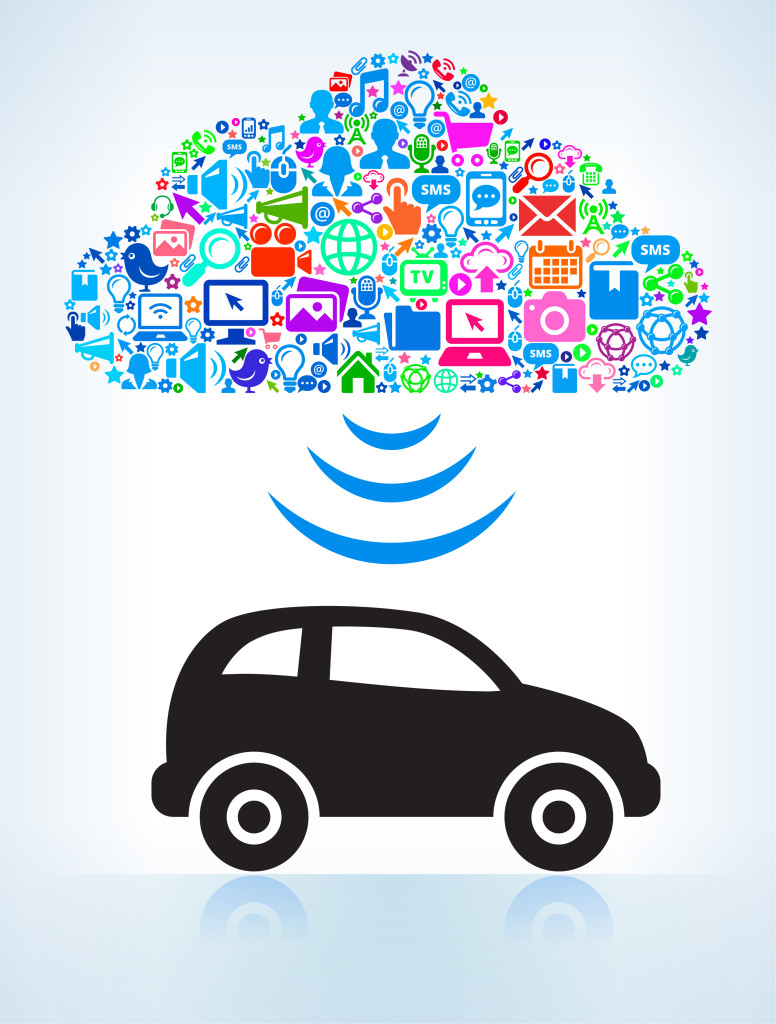The idea of the internet-enabled car is not a new thing. In fact, at Bunnyfoot we developed the first internet-enabled car back in 2000. The idea behind it hasn’t changed too much in the last 15 years, but technological developments, the internet of things and improved data channels have led to a host of new opportunities in this arena.
What are connected cars?

The definition of this is constantly changing as new technologies emerge, however currently connected cars use ‘in-vehicle telematics, whether over the internet or dedicated short range communications with diagnostic, location or other information, to provide safety, convenience and communication services.’
In the past, vehicle telematics systems were only used in emergencies, but now this is changing. The technology is no longer limited to only sending an alert when a car’s collision sensor goes off, now everything can be tracked from the moment of ignition to the moment the car is parked; acceleration, deceleration, fuel efficiency, oil temperature, location… the list goes on.
What opportunities do connected cars present?
Opportunities for connected cars are ever growing and cross multiple industries. Improved connective technology now allows a network of communications between vehicles, infrastructure, and wireless devices inside the vehicle. As such, there is a wealth of data available that is incredibly valuable to manufacturers, insurers, rental companies and more.
Car insurers
Several car insurance companies are making the most of this opportunity with apps that use vehicle telematics to measure people’s driving performance and help them save money on their car insurance; whilst at the same time allowing car insurers to see how good or bad a driver they are. These apps often make use of on board diagnostics devices (OBDs).
Some vehicle telematics apps even add an element of gamification to make their proposition more attractive; with driving score leaderboards, competitive driving ability is no longer limited to the realm of game consoles, though in this case higher scores are awarded for safer driving!
Feedback to users
Of course a lot of the other data collected can be useful for drivers too – data about fuel efficiency, the cheapest fuel nearby, and even what to do when one of the warning lights starts flashing on the dashboard.
The rise of the internet of things presents hundreds of opportunities for ways that this information could be utilised; how about tyres that can order their own replacements when their tread is worn, and exhaust systems that can precisely measure the pollution produced from a journey and compare it with other forms of transport?
Parental controls
Whilst benefits to the driver of the data collected may seem obvious, manufacturers are working to ensure it can also be beneficial for their family. For example, remote monitoring and location data allows parents to keep an eye on teenage drivers and can even prompt the teen to remind them when their curfew is.
Rental cars
Some rental car firms are using connected car technology to increase their competitiveness and offer additional services. Some have introduced apps that allow renters to plan their journey before they collect their car, so they can start their journey as soon as they start the engine. In some cases in-car systems can connect with the driver’s smartphone to make and receive calls; these services are great up-sells.
Infrastructure
More connectivity equals more data consumption, and there are massive opportunities for infrastructure services to meet demand. Data providers will be hoping that increasingly people will not only extend their data plans to cover their tablets, but also their cars.
The challenges of designing for connected cars
As with all opportunities for new services, there come usability and design challenges.
Safe interaction
Some of those challenges are similar to those presented by smart watches in certain ways. Smart watches are all about ‘glances’ rather than looks or clicks, and this is something that needs to be considered for connected cars too.
Any interactions with connected cars need to add something to the driver’s experience and not distract them from their current task – in this case driving! Safety is obviously of vital importance and any interactions with the system need to be ‘pure’ and focus on the absolute essentials.
Voice control and learned behaviour
Voice control is being used as a means of interaction to minimise distraction to the driver, but it’s interesting to think about the other options that could be explored.
For example, how about pre-empting driver needs and learning behaviour; if the driver always calls their wife on their drive home from work, could the connected car learn this behaviour and offer to call her? Could a connected car sense when surrounding vehicles rapidly decelerate and respond by slowing its speed down or flashing up an earlier warning? Or perhaps a driver could receive very subtle tactile feedback through their steering wheel.
Privacy
The Future of Privacy Forum put together a report last year about connected cars and data privacy. In it they discuss the need for drivers to have to be able to trust that all their personal data gathered will be used in a trustworthy manner.
There was an attack recently in which two hackers were able to access the infotainment system of a car using a smartphone. They also managed to hack the core controls such as brakes and steering. Obviously the possibility of someone hacking into your car’s entertainment system is worrying, but someone being able to hack into your brakes is potentially life threatening.
The provision of Software Over the Air (OTA) is likely to increase and so in situations like these where a security flaw is discovered, it can be corrected as quickly as possible without owners needing to go to a dealer to get their car’s systems upgraded.
Want to learn more?
Our services: The Internet of Things (IoT) Consultancy




